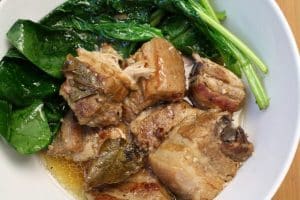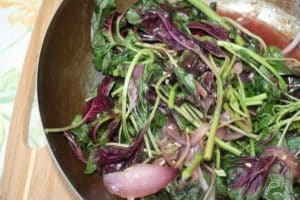Salted Eggs – Itlog Na Maalat
As an Amazon Associate and member of other affiliate programs, I earn from qualifying purchases.
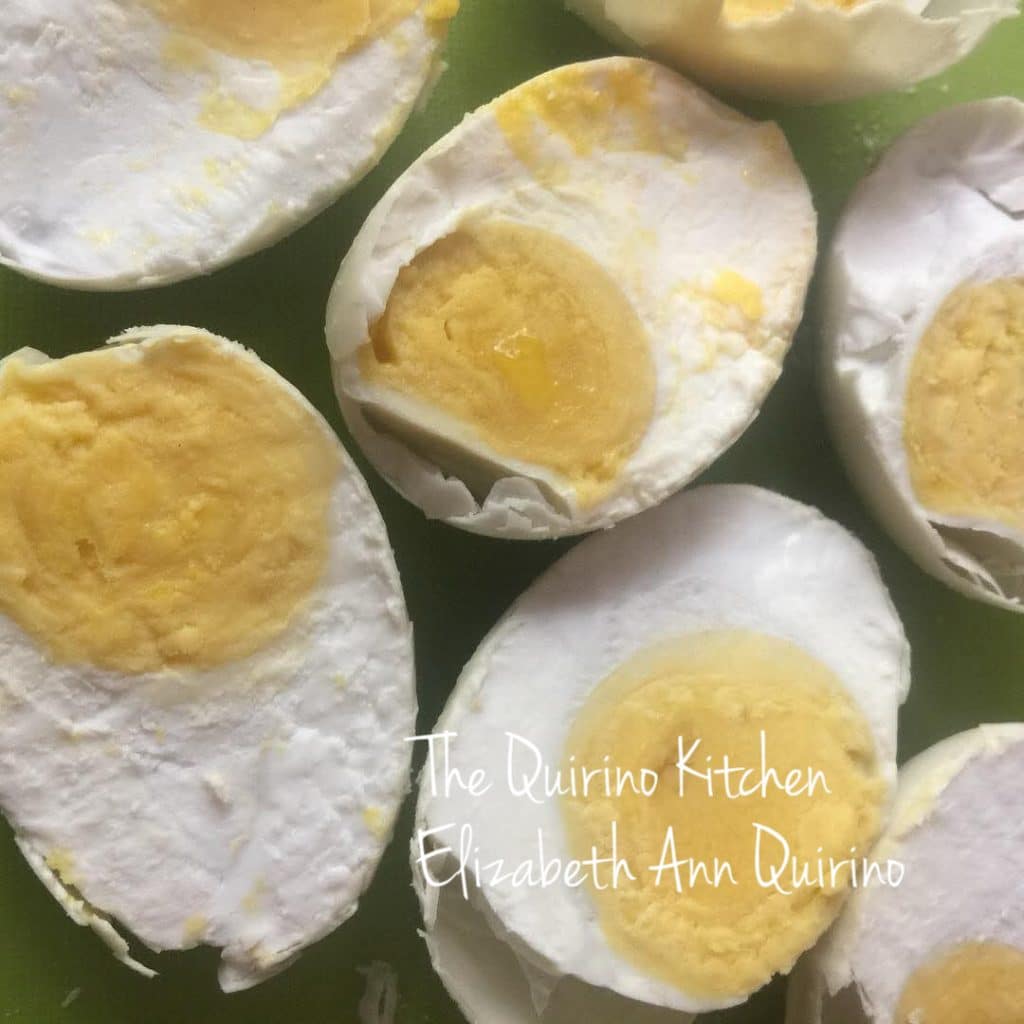
What are salted eggs ?
A popular way to preserve eggs in the Philippines is by making Salted Eggs or Itlog na Maalat. Duck eggs are more often used because they are larger than chicken eggs. But since we live in America, I have substituted instead with large-sized chicken eggs, because duck eggs are hard to find anywhere in the suburban markets.
Salted eggs are popular in most Asian countries and are believed to have originated in China. Considered an East Asian preserved food product, the salted duck egg in other Asian countries is soaked in brine and packed in damp, salted charcoal. The eggs are commercially sold with the charcoal paste removed, wrapped in plastic and vacuum packed.
In the Philippines, the eggs are soaked in a brine of water and salt for nearly a month. Then the eggs are cooked till hard-boiled. Often, commercial salted eggs are soaked in red dye; to give customers that distinction they are the salted ones.
How I learned to make homemade Salted Eggs
During our first years living in America, I had a difficult time finding Filipino groceries because we lived in the suburbs, which were hours away from Asian stores. So I resorted to making my own Filipino ingredients to add during the cooking process. One of the side dishes I missed most was the salted eggs.
Over the years, as I progressed in my food writing, I made friends with Filipino culinary experts – chefs, bloggers, home cooks, other writers. We exchanged recipes and ideas, and learned from each other, whether we lived here in the USA or in the Philippines (thank you, internet for the accessibility).
One such good friend was Chef Day Salonga, from Laguna. Through the blogging world almost 15 years ago, we got to know each other. In person or online, Chef Day was a kind and gentle soul, always ready to help with a recipe or cooking advice. We even met in person at a food event in Manila.
But today, is a day to remember Chef Day and his Salted Egg recipe. When I logged on social media this morning, I read the sad news that Chef Day had died from a long, lingering illness. The Philippine culinary world lost one of its heroes. His kindness will be missed, but his food and recipes shared will be a way of remembering Chef Day fondly.
Ingredients Needed for Salted Eggs
Basically the shortest list for this amazing salty treat:
- Salt – I used Kosher salt for this one. In the Philippines, we use table salt or rock salt.
- Water – for boiling the brine
- Chicken Eggs – use the largest-sized eggs. You will need a dozen for this recipe.
- A large, wide mouth glass jar – with a capacity for about 1 gallon.
Storage and Shelf Life
Once the process is done, store the salted eggs in the refrigerator. Homemade salted eggs can keep up to 3 weeks.
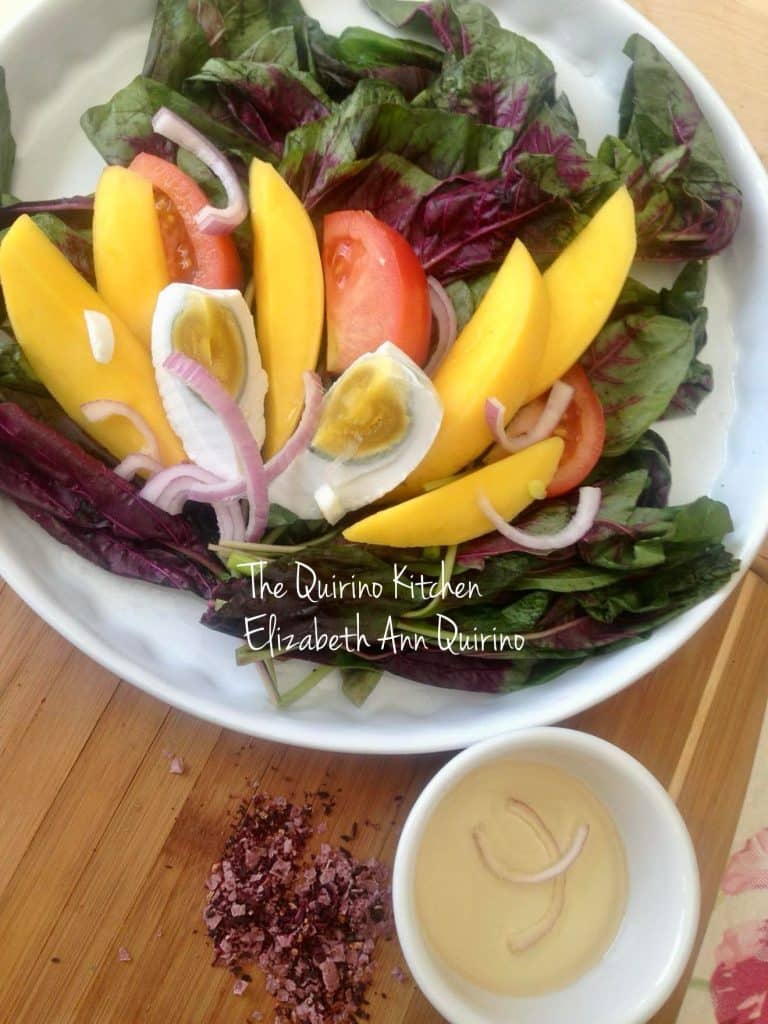
How To Use Salted Eggs
Salted Eggs or Itlog na Maalat can be used in a variety of Filipino dishes, snacks or sides:
- Salads – like Tomato-Mango-Spinach salads; or Kangkong salads
- Dips for Appetizers
- Rice Cakes – like Bibingka
- Appetizers – like Salty Egg-flavored Potato Chips
- Bread and Pastries like Ensaymadas
- Snacks – Cuapao with Bola-Bola and Salted Egg
One of the most popular recipes I have shared on this blog is the Salted Egg-Flavored Potato Chips. These crisp, salty treats have been a favorite snack all over Asian countries, and the Philippines. Friends and family even bring it back to us as pasalubong (gifts from travel).
You can find my recipe for Salted Egg-Flavored Potato Chips here. (Click on this link). And if you fancy making the Salted Eggs from scratch, here’s the recipe from the late Chef Day Salonga, as we remember him fondly in the Filipino culinary world. Maraming salamat, Day!
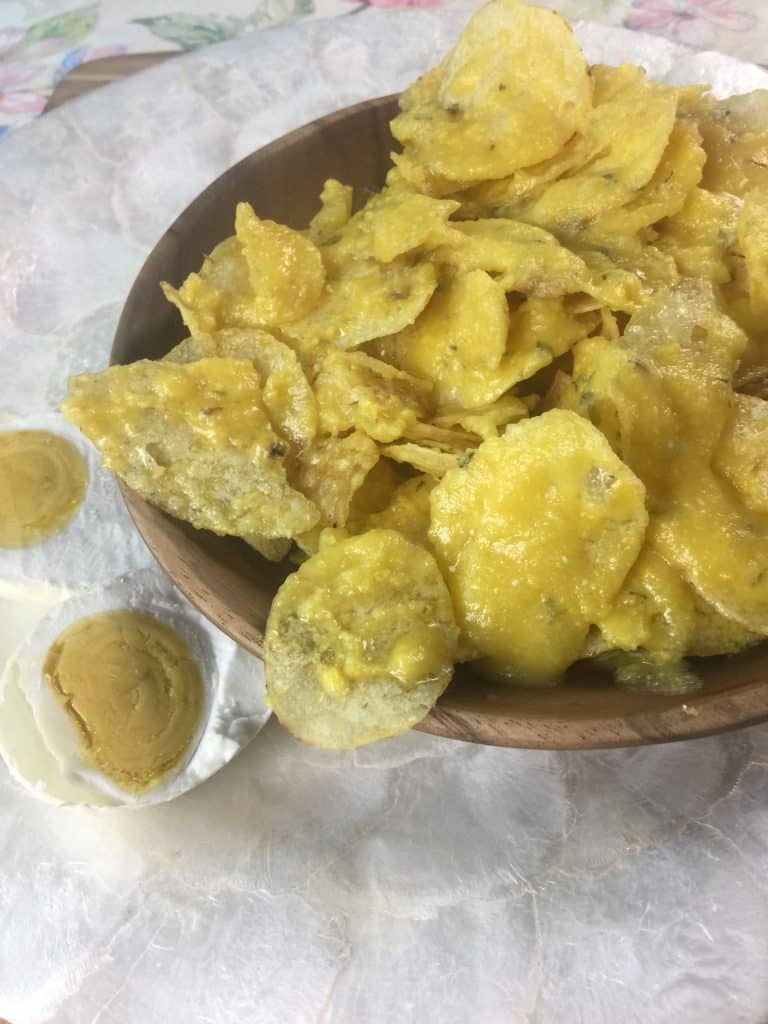
Salted Eggs – Itlog Na Maalat
Equipment
- Large Stockpot
- Glass mason jar with lid; 1-gallon, wide-mouth
Ingredients
For the Brine
- 12 cups Kosher salt (or I use rock salt in the Philippines
- 6 cups water
For the Salted Eggs
- 12 large whole eggs
Instructions
Day 1
- In a large stockpot, combine the salt and water together. Stir to incorporate salt.Over medium-high heat, bring the water to a boil, about 7 to 8 minutes. Turn off the heat. Then let the water come down to room temperature.
- Carefully place the raw eggs inside the wide-mouth, large glass jar.Pour the water-salt solution inside the jar, over the eggs.Make sure eggs are submerged in the water.TIP: I place a heavy small saucer and a heavy object like a rock to keep the eggs submerged.Cover the jar with the lid. Keep the jar airtight.Refrigerate for 20 to 25 days. (Do not open the jar the entire time it is in the refrigerator).
Day 26
- On Day 26, transfer the salty water brine and the eggs in the large stockpot.Over medium-high heat, bring the water to a boil. Continue boiling for 10 minutes, till the eggs are hard-boiled.
- Transfer the eggs to a large bowl filled with ice-cold water to stop cooking.When the eggs have cooled down, after about 10 to 15 minutes, store the Salted Eggs in the refrigerator..Use the eggs as ingredients or sides, after a day or 2.
Cook's Comments:
- Storage: Keep the Salted Eggs – Itlog na Maalat refrigerated at all times when not in use. This can keep up to 3 weeks in the refrigerator.In the Philippines, commercial Salted Eggs are soaked in red dye to distinguish that these are the salty ones.
Nutrition
Copyright Notice: Hello, Friends! Please DO NOT LIFT OR PLAGIARIZE The Quirino Kitchen recipes on this blog, my original recipes, stories, photos or videos. All the images and content on this blog are COPYRIGHT PROTECTED and owned by my media company Besa-Quirino LLC by Elizabeth Ann Quirino. This means BY LAW you are NOT allowed to copy, scrape, lift, frame, plagiarize or use my introductory recipe notes, photos, essays, stories and recipe content on your websites, books, films, television shows, videos, without my permission. If you wish to republish this recipe or content on media outlets mentioned above, please ASK MY PERMISSION, or re-write it in your own words and link back to my blog TheQuirinoKitchen.com to give proper attribution. It is the legal thing to do. Thank you. Email me at [email protected]





